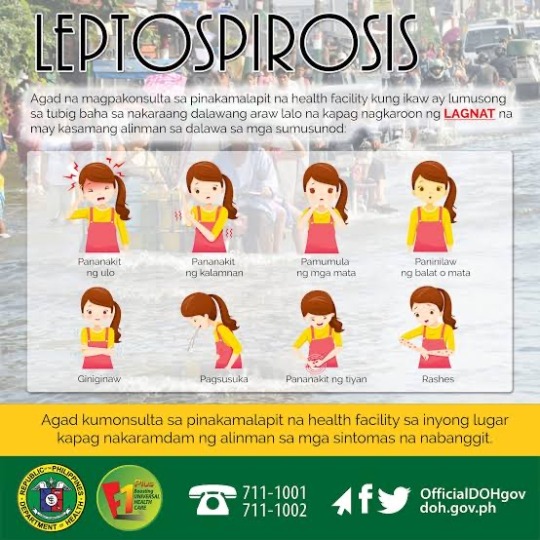Text

The zoonotic disease, LEPTOSPIROSIS is caused by the organism Leptospira which has more than 200 serologic variants. Humans are usually infected by this pathogenic disease by means of contact with the urine of the infected animals either directly or indirectly such as in soil, usually, from rats or those belonging to the rodent family. The bacteria enters through the cuts as well as abrasions in the skin, through the mouth, nose and eyes. In rare instances, person-to-person transmission is possible. This disease has the potential to be an epidemic in every country and has global morbidity and mortality cases of 1.03 million and 59,800 deaths respectively (Costa, et. Al. , 2017).
According to the Department of Health, Bicol was one of the regions that reached a high alert level with regards to leptopsirosis cases for the last couple of months. The Bicol Medical Center have admitted 99 patients with leptospirosis in 2020 and 100 in 2021, these admissions tallied 10 deaths for the latter and 8 deaths for the former. So far this year, the hospital has 37 admissions, 2 of which died; it is also worth noting that well over 90% of the patients are male (Bicol Medical Center Surveillance Unit, 2022).
Some of the common symptoms of leptospirosis are high fever, chills, joint and muscle pains, andominal pains, red eyes, tea-colored urine and jaundice (yellowish skin and eyes). Some of the these signs are common to other illness such as flu and dengue, that is why many people think and assume that what they are feeling are the aforementioned sicknesses; this leads to late detection and treatment of leptospirosis. Fortunately, there are now diagnostic tools in Bicol like the Leptospirosis IgG or Igm test which can determine the presence of leptospira organism in hosptals and laboratories. It is crucial to treat leptospirosis as soon as possible in order to prevent fatal complications such as kidney damage, liver failure, meningitis (inflammation of the brain and spinal cord) and respiratory distress.

Leptospirosis has also myths and misconceptions surrounding it and its misinformation serves as barrier to its treatment. It is the belief of many that mosquitoes may transmit the leptospira to people. These microbes can only be passed on through the urine of contaminated rodents, the more common suspects are rats. There are also instances wherein infected dogs, cows, pigs and even humans are able to transmit this disease. Another false information is that once a patient recovers from leptospirosis, he can no longer be infected with it ever again. There are over 200 variants of leptospira microbes and there is a possibility that a former patient may contract this disease again. Lastly, a crucial and common mindset of number of Filipinos is that an acute kidney injury related to leptospirosis will need lifetime of hemodialysis treatment. The hemodialysis treatment will only be needed while the treatment of severe leptospirosis is ongoing. Once the antibiotic regimen is finished and the kidneys are once again in normal functioning state, hemodialysis treatment will not be necessary.
There are vulnerable populations and groups that can contract leptospirosis such as farmers, miners, sewer workers, slaughterhouse workers, dairy farmers, janitors, health care professionals, veterinarians and animal care takers as well as residents from floodprone areas. The population groups mentioned are all exposed to water and/or soil which are possibly contaminated by an infected rat’s urine. However, anyone is susceptible to leptospirosis but the good news is there are ways in order to minimize the risk of being infected with this dreaded disease such as eradication of rats in the house, maintain cleanliness of household, avoid swimming in the flood or dirty waters and use of personal protective equipment (PPE).
Having gone through the brief details regarding leptospirosis, it may seem daunting at first. However, this communicable disease that is on a rising trend is easily preventable and treatable as long as the people, community and health leaders are equipped with the knowledge on its signs and symptoms, mode of transmissions, persons at risk, prevention, treatment regimen and its clinical facts. Health literacy regarding this matter will be vital in combatting this zoonotic disease which is leptospirosis.
By:
Victor Raja David V. Gumabon
DOH Ambassador for Region - V
References:
Research Gate
Department of Health
Bicol Medical Center Surveillance Unit
1 note
·
View note